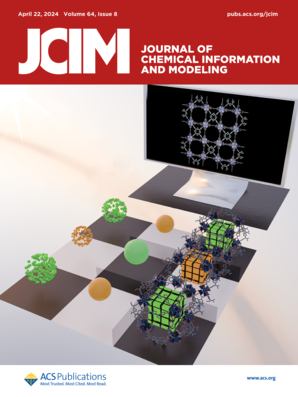ABP-Xplorer: A Machine Learning Approach for Prediction of Antibacterial Peptides Targeting Mycobacterium abscessus-tRNA-Methyltransferase (TrmD).
IF 5.6
2区 化学
Q1 CHEMISTRY, MEDICINAL
引用次数: 0
Abstract
Mycobacterium abscessus (MAB) infections pose a significant treatment challenge due to their intrinsic resistance to antibiotics, requiring prolonged multidrug regimens with limited success and frequent relapses. tRNA (m1G37) methyltransferase (TrmD), an enzyme essential for maintaining the reading frame during protein synthesis in MAB and other mycobacteria, is a potential therapeutic target for identifying new inhibitors. This study introduces ABP-Xplorer, a machine learning-based (ML) model designed to predict the antibacterial potential of peptides targeting MAB-TrmD ribosomal sites. A systematic evaluation of 26 machine learning models identified the Random Forest (RF) classifier as the most effective, achieving 96% accuracy. To address data set imbalance and enhance predictive reliability, the Synthetic Minority Oversampling Technique (SMOTE) was applied, improving model generalization and reducing bias. After that, an ABP-Xplorer streamlit was developed to predict positive and negative antibacterial peptides (ABP), enabling easy sequence input and classification based on predictive scoring. For validation, 12 positive peptides with high predictive scores were selected for molecular docking by HADDOCK. Docking analysis of selected peptides confirmed strong binding to TrmD, with P1, P7, P8, and P9 as top candidates. Notably, P1 exhibited the best interaction with a HADDOCK score of -102.2, followed by P7 (-93.6) and P8 (-91.4), indicating their potential for further development as TrmD inhibitors.Moreover, Ramachandran plot analysis validated the structural reliability. Future research should focus on the experimental validation of these peptides and optimizing their stability and bioavailability for therapeutic applications.ABP-Xplorer:预测针对脓肿分枝杆菌- trna -甲基转移酶(TrmD)的抗菌肽的机器学习方法。
脓肿分枝杆菌(MAB)感染由于其对抗生素的内在耐药性而对治疗构成重大挑战,需要长时间的多药治疗方案,但成功率有限且经常复发。tRNA (m1G37)甲基转移酶(TrmD)是MAB和其他分枝杆菌在蛋白质合成过程中维持阅读框所必需的酶,是鉴定新的抑制剂的潜在治疗靶点。本研究引入ABP-Xplorer,这是一种基于机器学习(ML)的模型,旨在预测靶向MAB-TrmD核糖体位点的肽的抗菌潜力。对26个机器学习模型进行了系统评估,发现随机森林(RF)分类器是最有效的,准确率达到96%。为了解决数据集不平衡问题,提高预测可靠性,采用了合成少数派过采样技术(SMOTE),提高了模型的泛化能力,减少了偏差。之后,开发了ABP- xplorer streamlit来预测阳性和阴性抗菌肽(ABP),实现了简单的序列输入和基于预测评分的分类。为了验证,选择了12个预测分数较高的阳性肽进行HADDOCK分子对接。对接分析所选肽证实了与TrmD的强结合,其中P1, P7, P8和P9是首选候选肽。值得注意的是,P1与HADDOCK评分最佳,为-102.2,其次是P7(-93.6)和P8(-91.4),这表明它们作为TrmD抑制剂有进一步开发的潜力。Ramachandran图分析验证了结构的可靠性。未来的研究应集中在这些肽的实验验证和优化其稳定性和生物利用度的治疗应用。
本文章由计算机程序翻译,如有差异,请以英文原文为准。
求助全文
约1分钟内获得全文
求助全文
来源期刊
CiteScore
9.80
自引率
10.70%
发文量
529
审稿时长
1.4 months
期刊介绍:
The Journal of Chemical Information and Modeling publishes papers reporting new methodology and/or important applications in the fields of chemical informatics and molecular modeling. Specific topics include the representation and computer-based searching of chemical databases, molecular modeling, computer-aided molecular design of new materials, catalysts, or ligands, development of new computational methods or efficient algorithms for chemical software, and biopharmaceutical chemistry including analyses of biological activity and other issues related to drug discovery.
Astute chemists, computer scientists, and information specialists look to this monthly’s insightful research studies, programming innovations, and software reviews to keep current with advances in this integral, multidisciplinary field.
As a subscriber you’ll stay abreast of database search systems, use of graph theory in chemical problems, substructure search systems, pattern recognition and clustering, analysis of chemical and physical data, molecular modeling, graphics and natural language interfaces, bibliometric and citation analysis, and synthesis design and reactions databases.

 求助内容:
求助内容: 应助结果提醒方式:
应助结果提醒方式:


